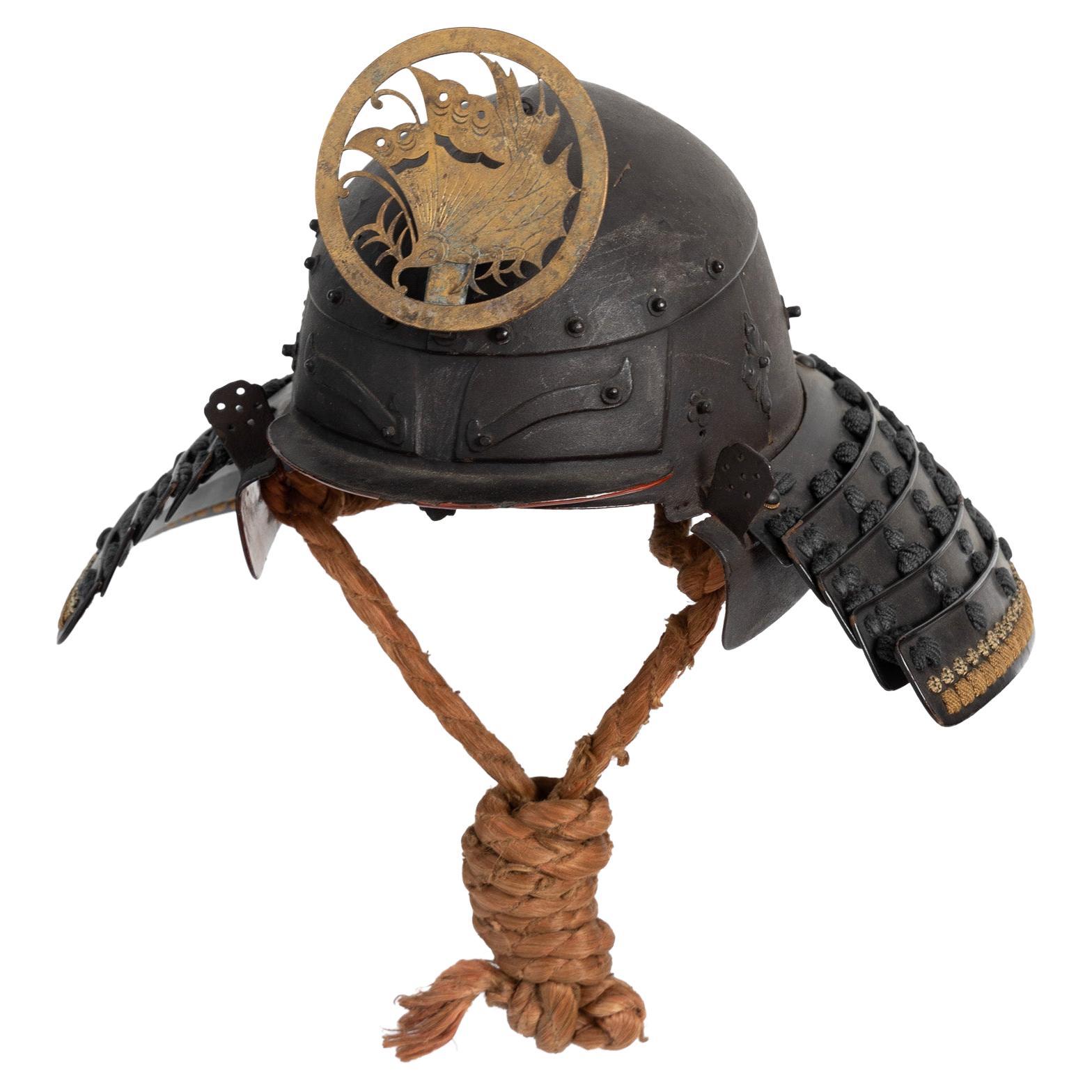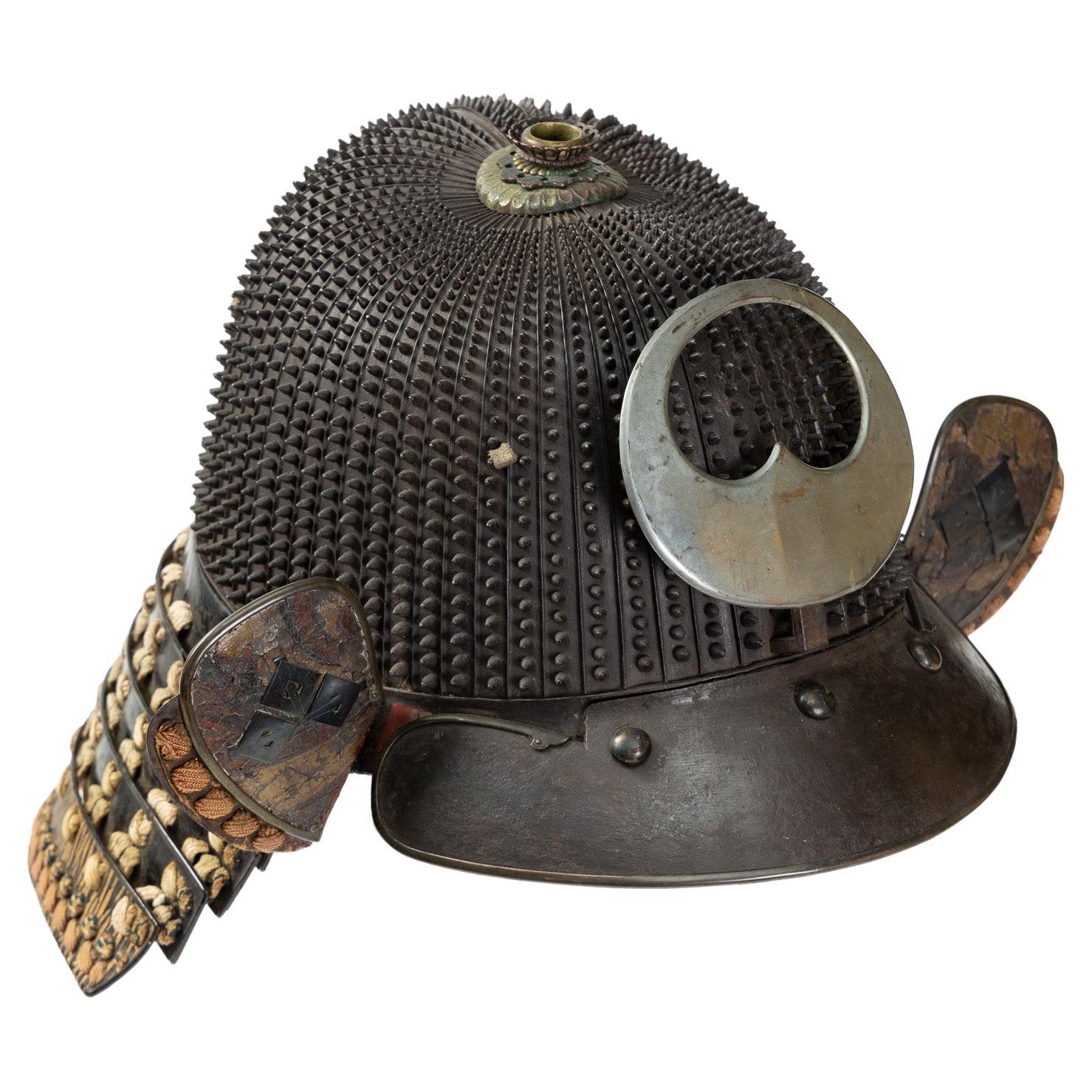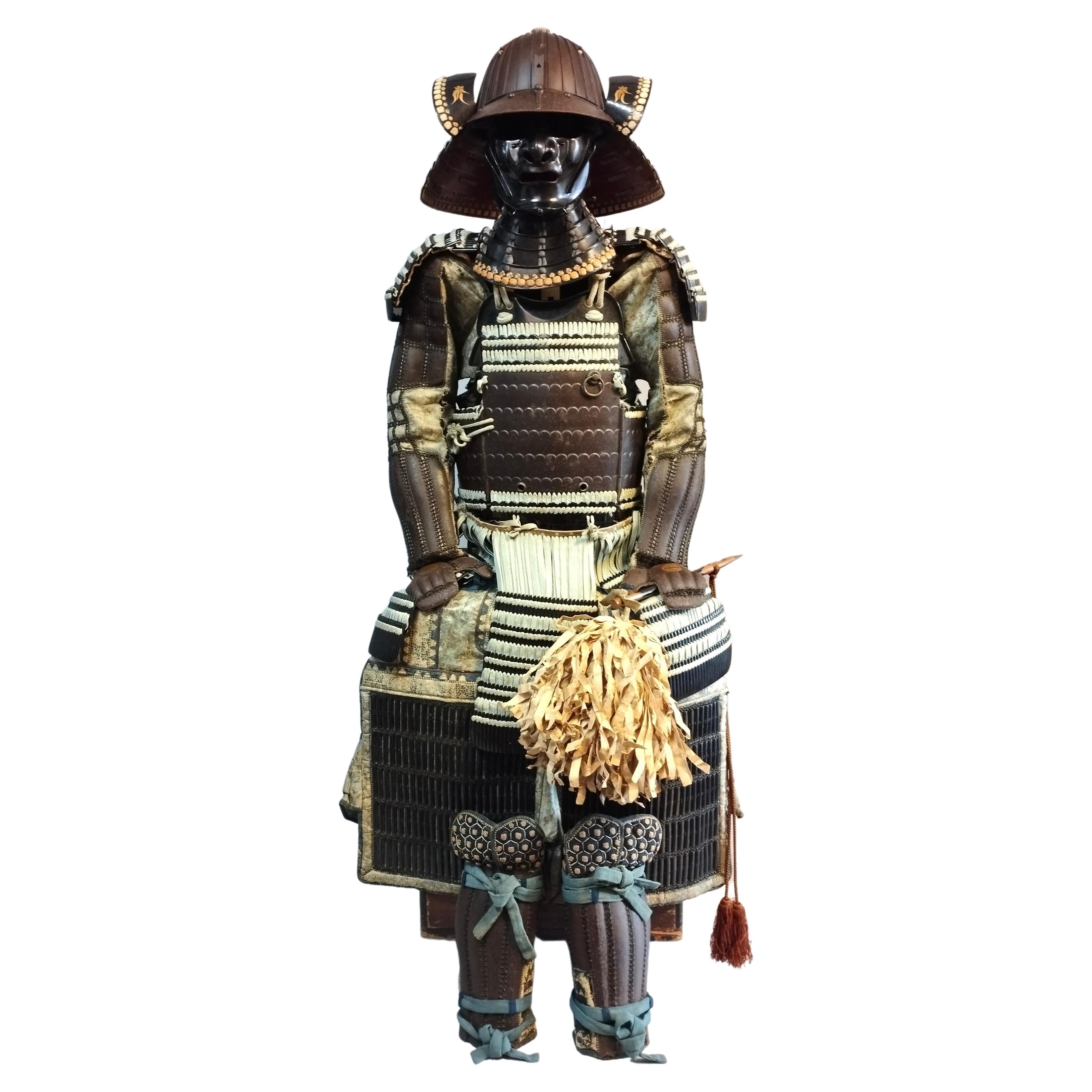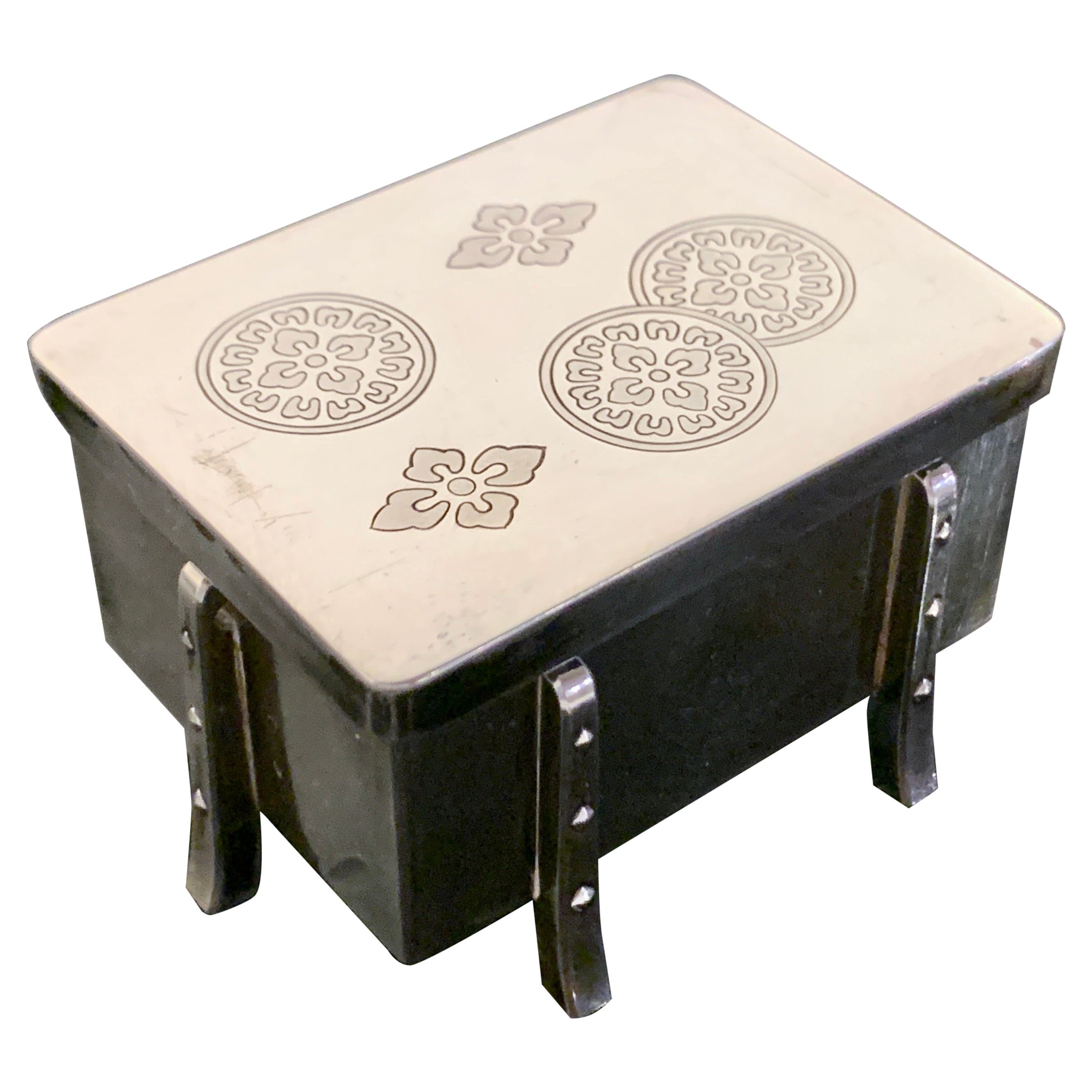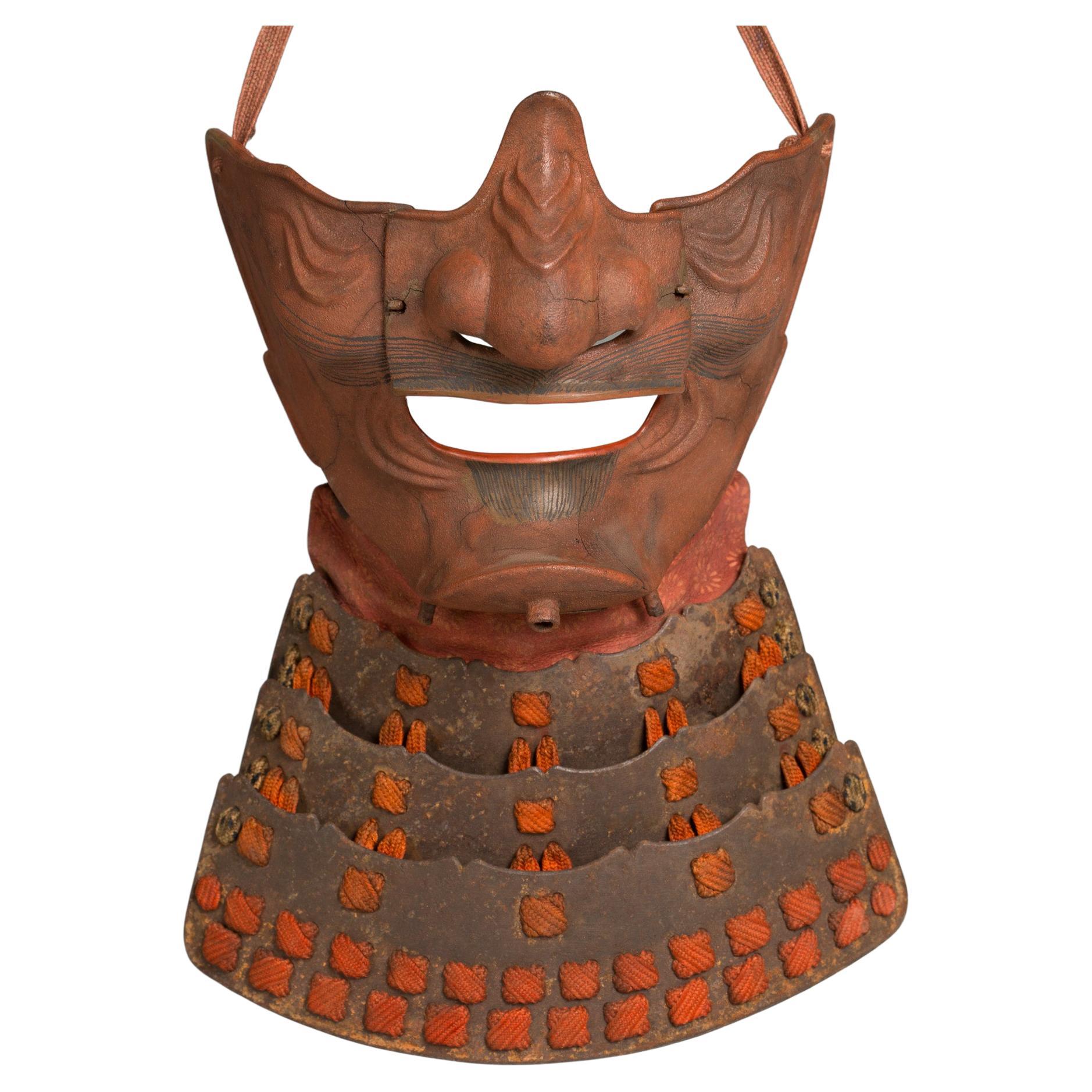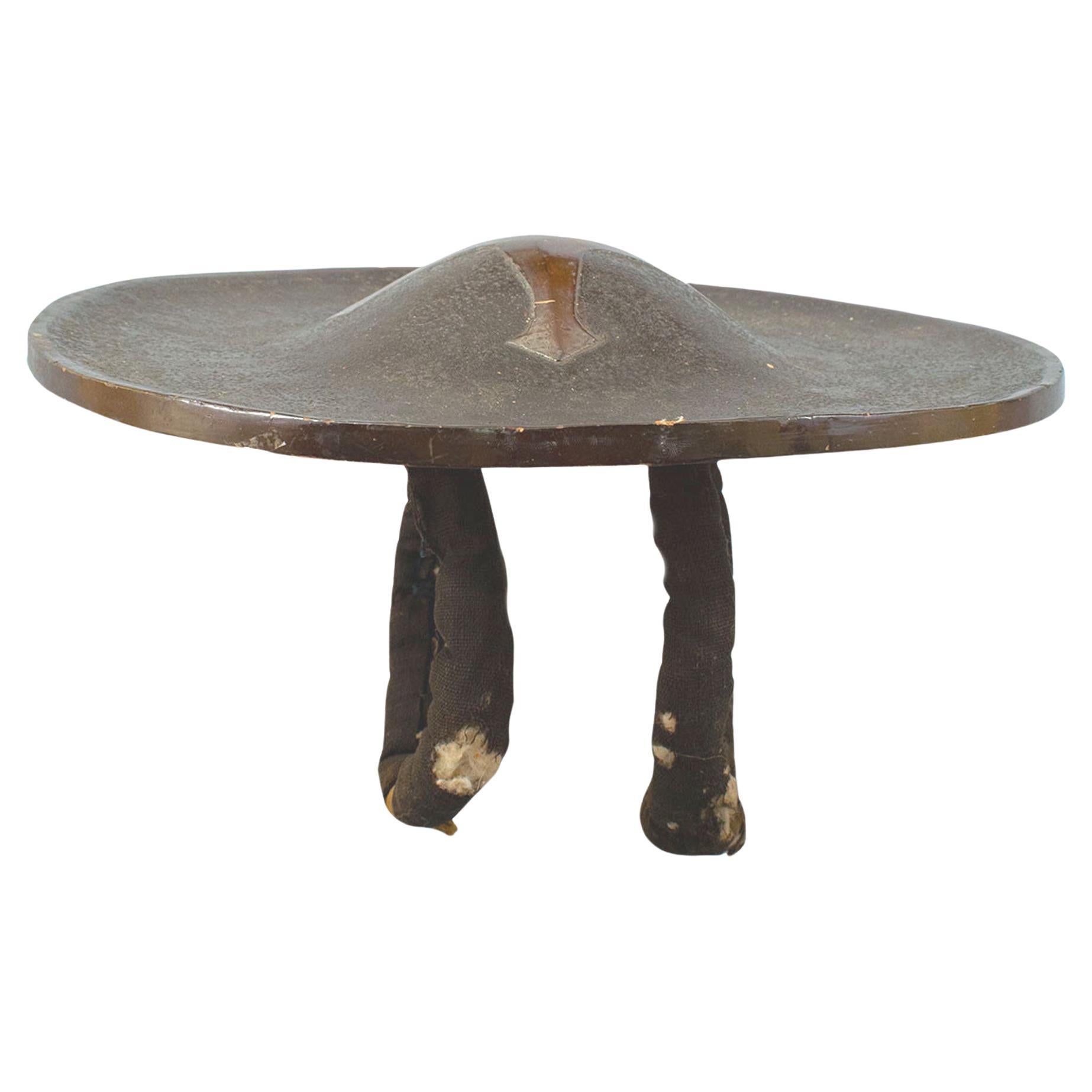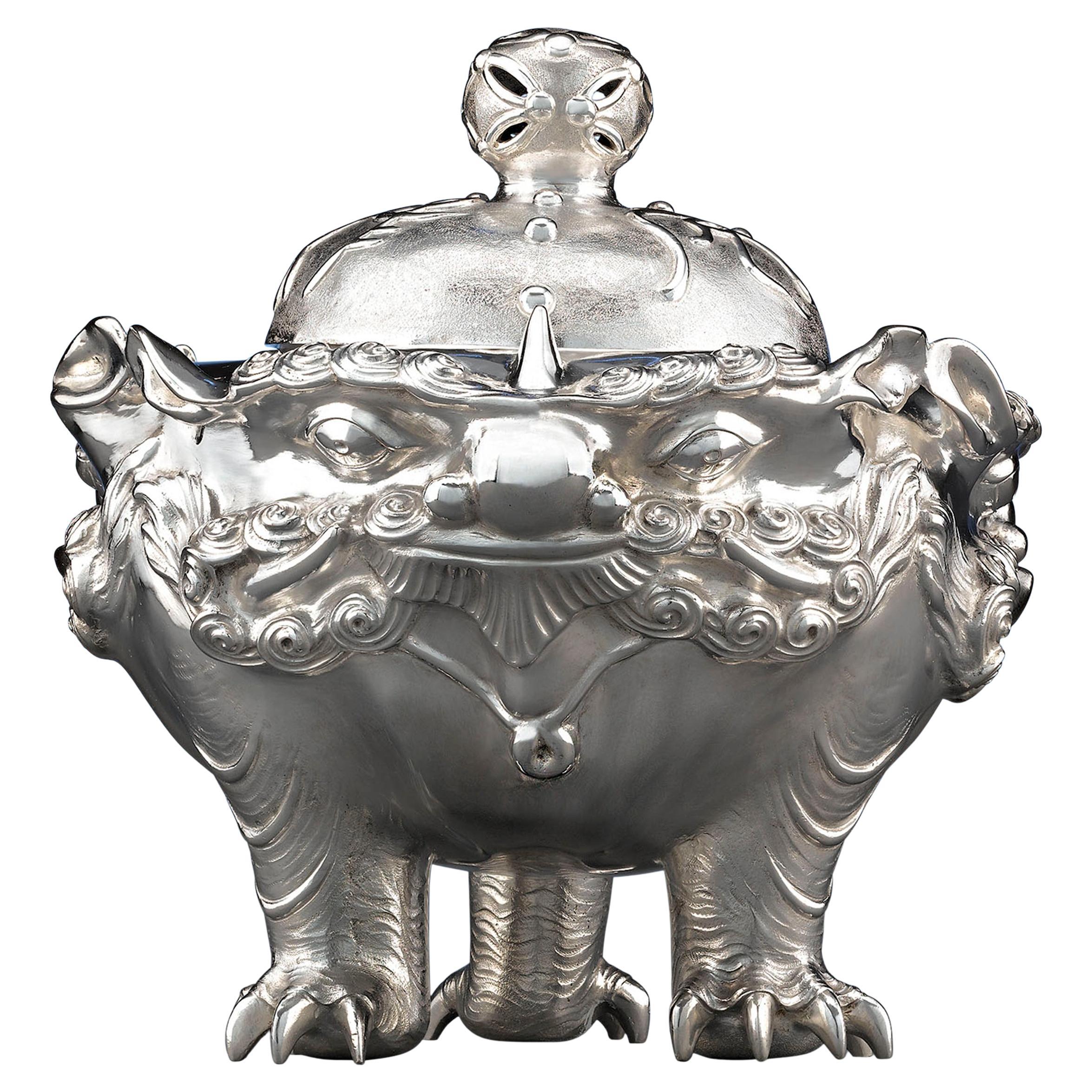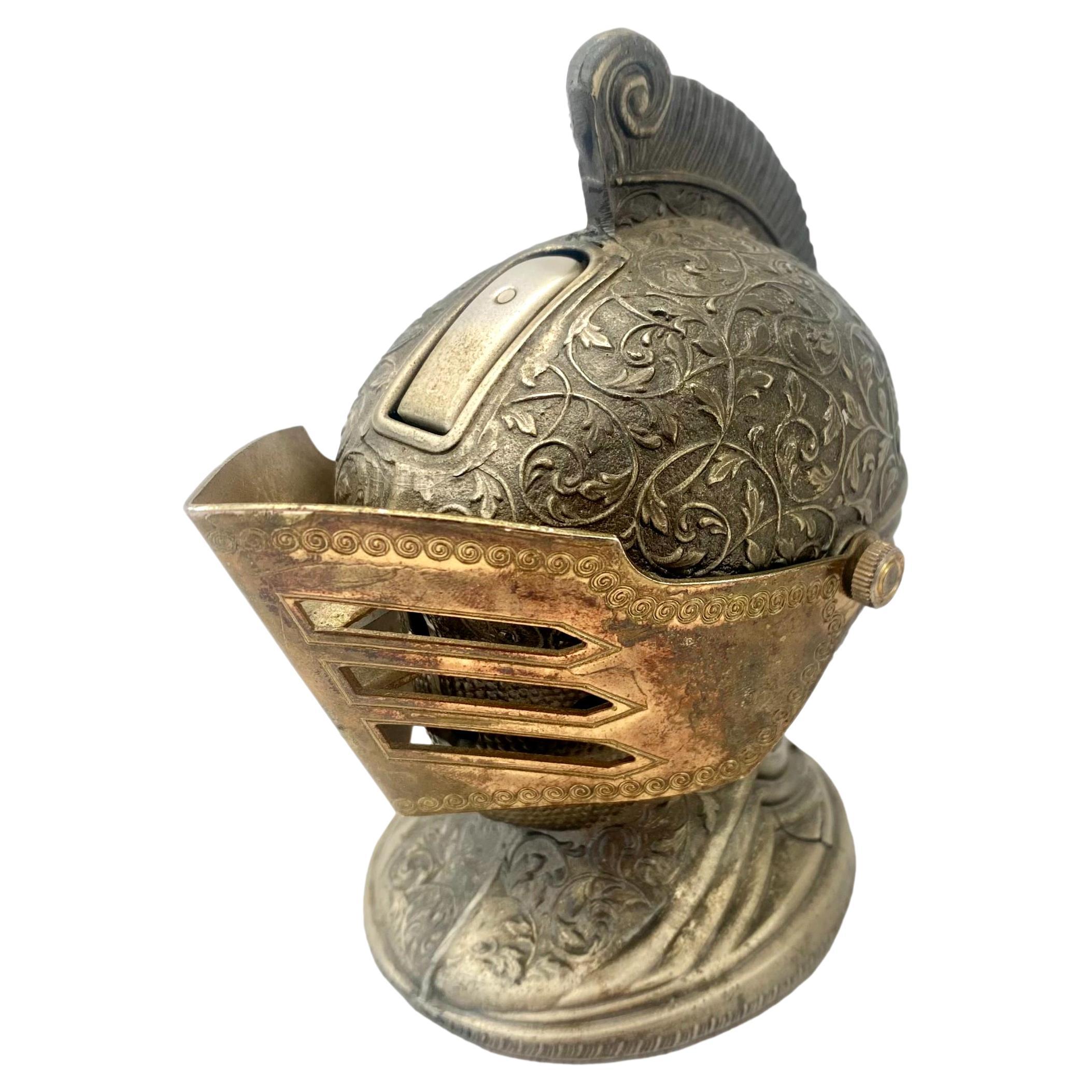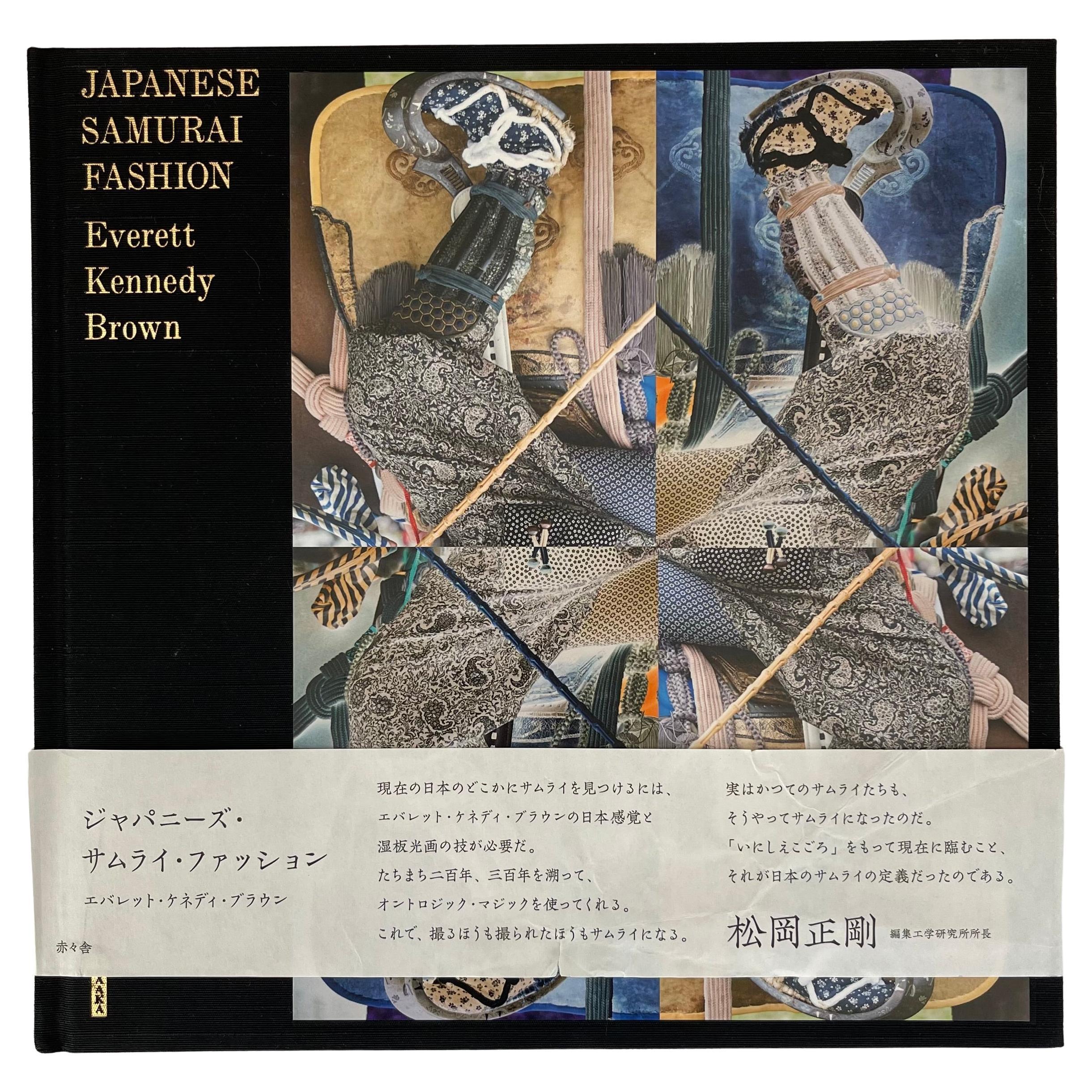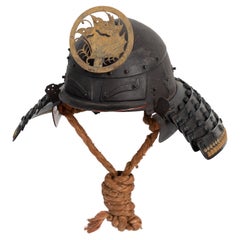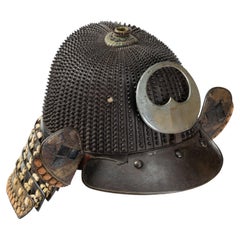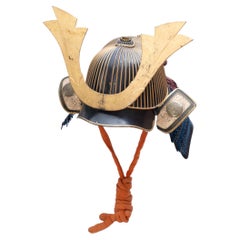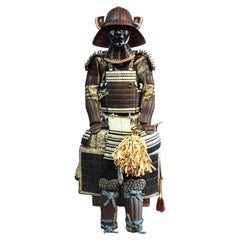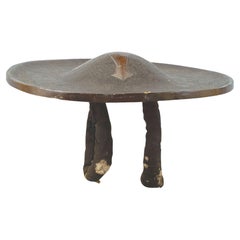
Japanese Samurai Helmet 'Kabuto' Signed "Soshu-Ju Myōchin Jo", Momoyama Period
View Similar Items
Want more images or videos?
Request additional images or videos from the seller
1 of 9
Japanese Samurai Helmet 'Kabuto' Signed "Soshu-Ju Myōchin Jo", Momoyama Period
About the Item
- Creator:Myōchin school (Metalworker)
- Dimensions:Height: 11.82 in (30 cm)Width: 15.75 in (40 cm)Depth: 9.85 in (25 cm)
- Materials and Techniques:
- Place of Origin:
- Period:
- Date of Manufacture:circa 1590
- Condition:Wear consistent with age and use.
- Seller Location:Milano, IT
- Reference Number:Seller: 9551stDibs: LU4250212614712
About the Seller
5.0
Recognized Seller
These prestigious sellers are industry leaders and represent the highest echelon for item quality and design.
Established in 2005
1stDibs seller since 2018
10 sales on 1stDibs
Typical response time: 1 hour
More From This SellerView All
- Okitenugui Kabuto Samurai Helmet Shaped as a Head Towel Saika, Early Edo PeriodLocated in Milano, ITOkitenugui kabuto Samurai helmet shaped as a head towel Saika, early Edo period, 17th century The Haruta armorers who moved to Kii province in the early 17th century, took the name from the village where they worked, Saika, near Wakayama, possibly on request of the local daimyo, Asano Yukinaga, a great armour amateur. Specialised in the construction of plate helmets, they produced mainly two typologies of kabuto: one with six plates covered with a chrysanthemum-shaped plate on top and one shaped as a “head towel”, called okitenugui. The latter type of kabuto employs very heavy plates crafted in a curved manner and was improved in order to make it resistant to firearms. This okitenugui kabuto features some distinctive decorations of the Haruta school, including the application of cut-out iron elements, including eyebrows, washers and lozenge-shaped decorations on the sides. The ring on the top, however, is a rare feature and could be used to hold a small war flag.Category
Antique 17th Century Metalwork
MaterialsIron
- Koboshi Kabuto, Samurai Helmet with Standing Rivets Haruta SchoolLocated in Milano, ITKoboshi kabuto Samurai helmet with standing rivets Haruta School Early Edo Period, 17th century A 62-plate koboshi-bachi [helmet bowl with small s...Category
Antique 17th Century Japanese Arms, Armor and Weapons
MaterialsIron
- Sujibachi kabuto 62-plate samurai helmet Haruta school, Edo periodLocated in Milano, ITSujibachi kabuto 62-plate samurai helmet Haruta school, Edo period 17th-18th century A lamellar helmet consisting of sixty-two plates joined with five rows of rivets. The surface is...Category
Antique Mid-17th Century Japanese Metalwork
MaterialsIron
- Sogonari Kabuto Samurai Helmet Shaped as a Human Head Early Edo PeriodLocated in Milano, ITSogonari Kabuto Samurai Helmet shaped as a Human Head Early Edo Period (1615 - 1867). Three-plates kawari kabuto covered with tawny hair to ...Category
Antique Early 1700s Metalwork
MaterialsFur
- Tōkanmuri Kabuto Samurai Helmet in the Shape of a Court CAPLocated in Milano, ITTokanmuri kabuto Samurai helmet in the shape of a court cap Momoyama to early Edo Period 17th century The wearing of helmets that reproduced the shapes of traditional ...Category
Antique 17th Century Japanese Metalwork
MaterialsIron
- Suji-bachi kabuto and menpo Signed by Myōchin Muneaki and dated 1853Located in Milano, ITSuji-bachi kabuto and menpo Signed by Myōchin Muneaki and dated 1853 Signature: Kaei 6 - Ushidoshi Oshu Nihonmatsu-ju Myōchin Ki (no) Muneaki saku Made in 1853 by Myōchin Ki Muneak...Category
Antique 18th Century and Earlier Metalwork
MaterialsIron
You May Also Like
- 18th Century Hirate Clan Samurai Armor with Signed Kabuto HelmetLocated in Fukuoka, JPThis is a truly exceptional set of 18th century Samurai armor that is sure to impress any collector or enthusiast. The patinated iron used in its construction has aged beautifully, giving the armor a truly unique appearance that is sure to catch the eye. The brocade silk and cotton padding used to line the armor not only provide a comfortable fit for the wearer, but also add an extra layer of decorative flair. One of the most striking features of this armor is the crests of the Hirate samurai clan that adorn it. These crests are a symbol of the clan's identity and heritage, and their presence on the armor speaks to the deep connection between samurai warriors and the clans they belonged to. The Kabuto...Category
Antique 18th Century Japanese Antiquities
MaterialsIron
- Japanese Silver Karabitsu Bonbonniere Box, Taisho Period, JapanLocated in Austin, TXA fine Japanese silver bonbonniere box in the shape of a karabitsu, Meiji Period, circa 1900, Japan. The small bonbonniere crafted of silver in the form of a karabitsu, a storage ...Category
Vintage 1920s Japanese Meiji Metalwork
MaterialsSilver, Sterling Silver
- JINGASA - ICHIMON-GASA EDO Period 19th Century Samurai Helmet JapanLocated in TEYJAT, FRJINGASA - ICHIMON-GASA EDO Period 19th Century Jingasa, flat-shaped Samurai headdress made of wood, the exterior covered with black lacquer depicting a brown kamon, a Japanese heral...Category
Antique Mid-19th Century Japanese Edo Arms, Armor and Weapons
MaterialsLeather, Textile, Wood
$389 Sale Price20% Off - A Very Good 19th Century Iron & Mixed Metal Tsuba, Japan Edo Period (1603-1868)Located in Ottawa, OntarioA finely decorated iron & mixed metal tsuba, showing a dark-brown iron ground decorated in low relief with organic inspired motifs in gold, silver & copper.Category
Antique Mid-19th Century Japanese Edo Metalwork
MaterialsGold, Silver, Copper, Iron
$1,200 Sale Price20% Off - Edo period samurai full set of armor (yoroi) with unique original helmetLocated in Fukuoka, JPExcellent set of Samurai armor Edo period. According to the inscription on the Dou(cuirass), Armor was commissioned by a leading member of Wada Samurai family, Wada Masatada to a renown armor maker, Myochin Munetaka. 18th century. Pristine condition, with only minor abrasions and losses due to significant age. PRICE and other inquiries, please send a message. It holds prestigious Tokubetsu Kitcho Shiryo (especially important cultural item), papers by Nihon Katchū Bugu Kenkyū Hozon Kai (The Association for the Research and Preservation of Japanese Armor...Category
Antique Late 18th Century Japanese Edo Arms, Armor and Weapons
MaterialsIron
- Meiji Period Japanese Silver CenserLocated in New Orleans, LAThis stunning Meiji period silver censer is a work of exquisite detail. Crafted by renowned silversmith Masatoshi of Tokyo, the censer, or incense burner...Category
20th Century Japanese Meiji Metalwork
MaterialsSilver
